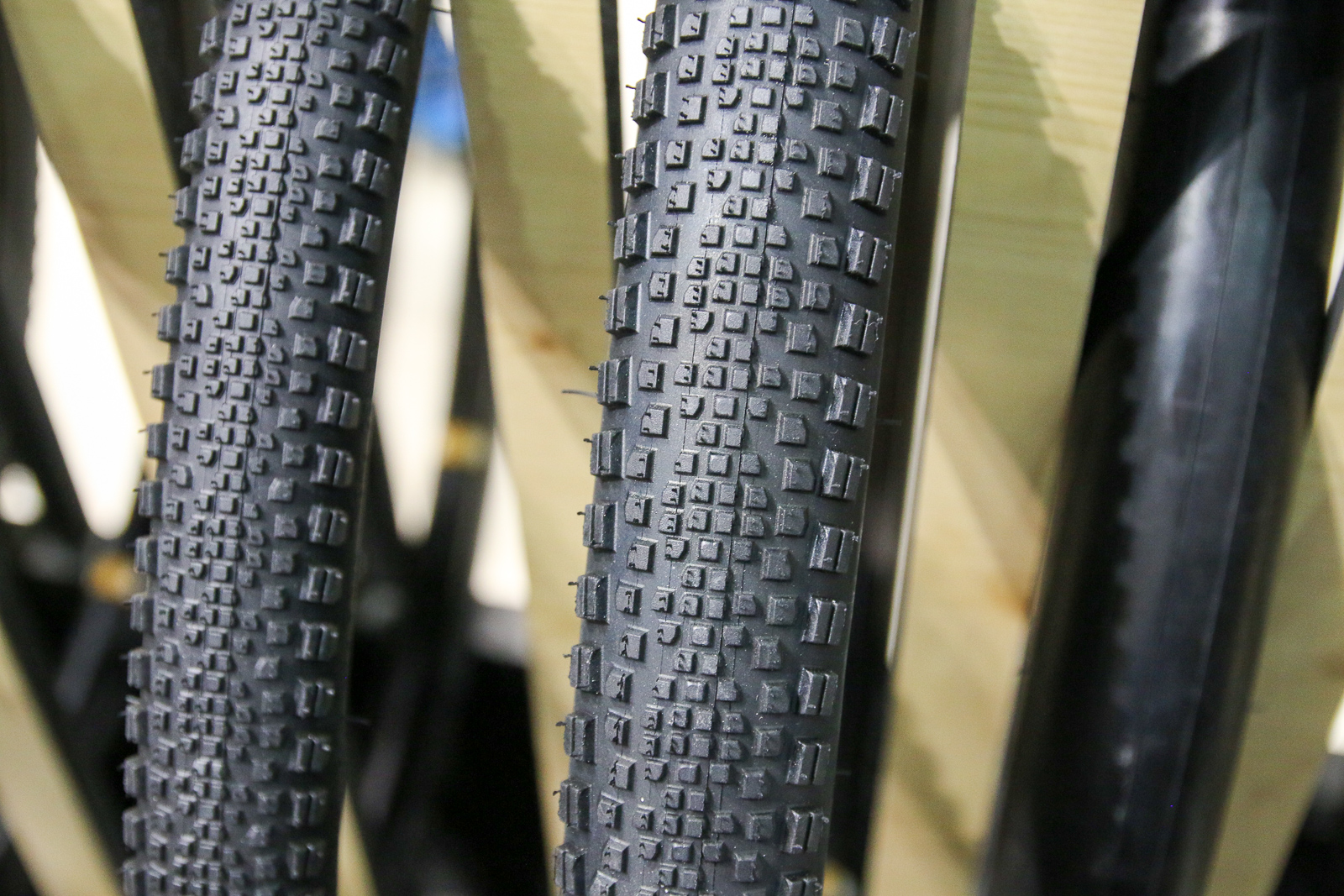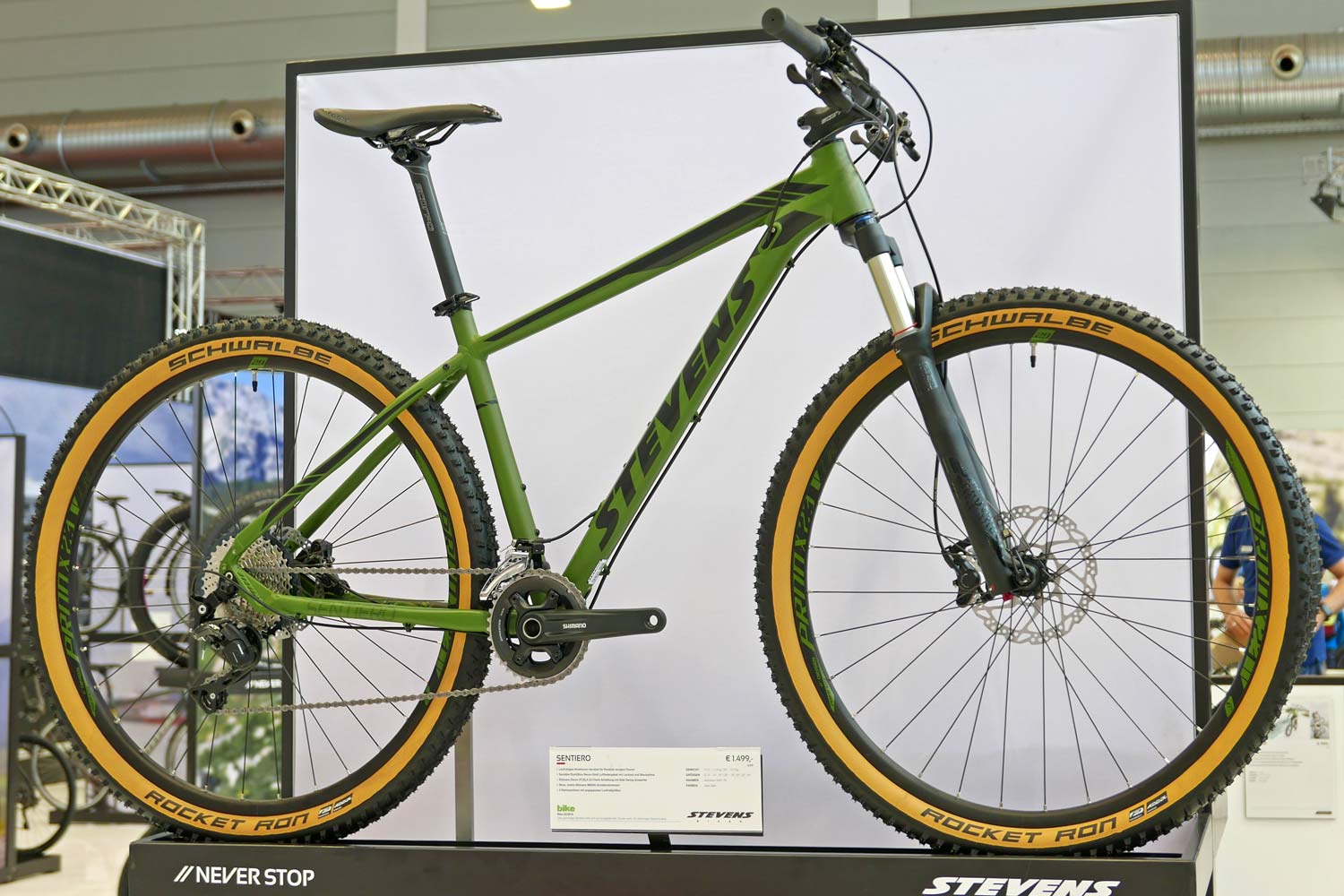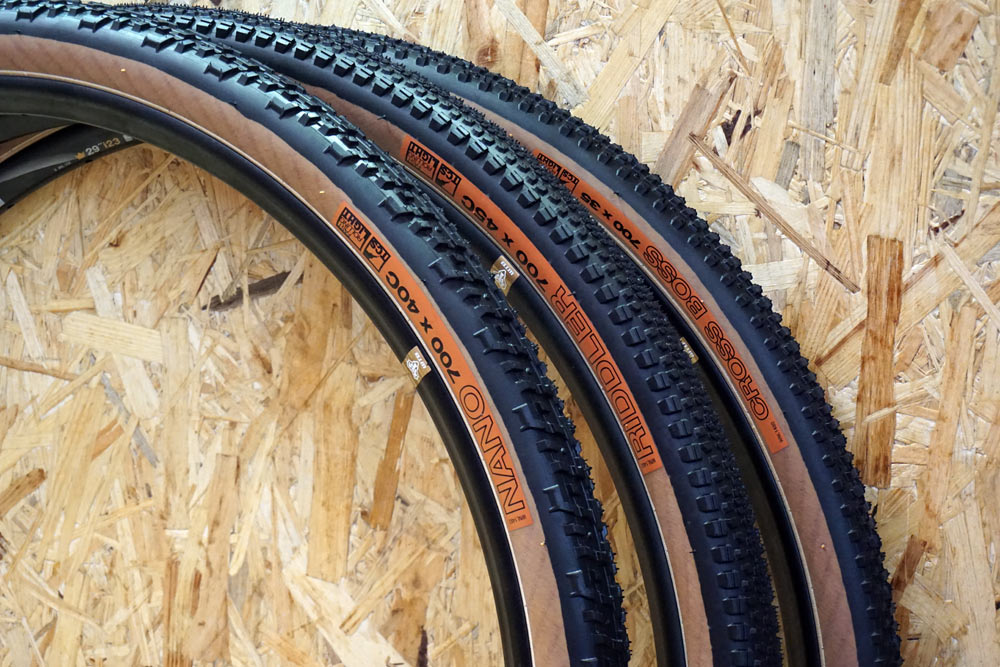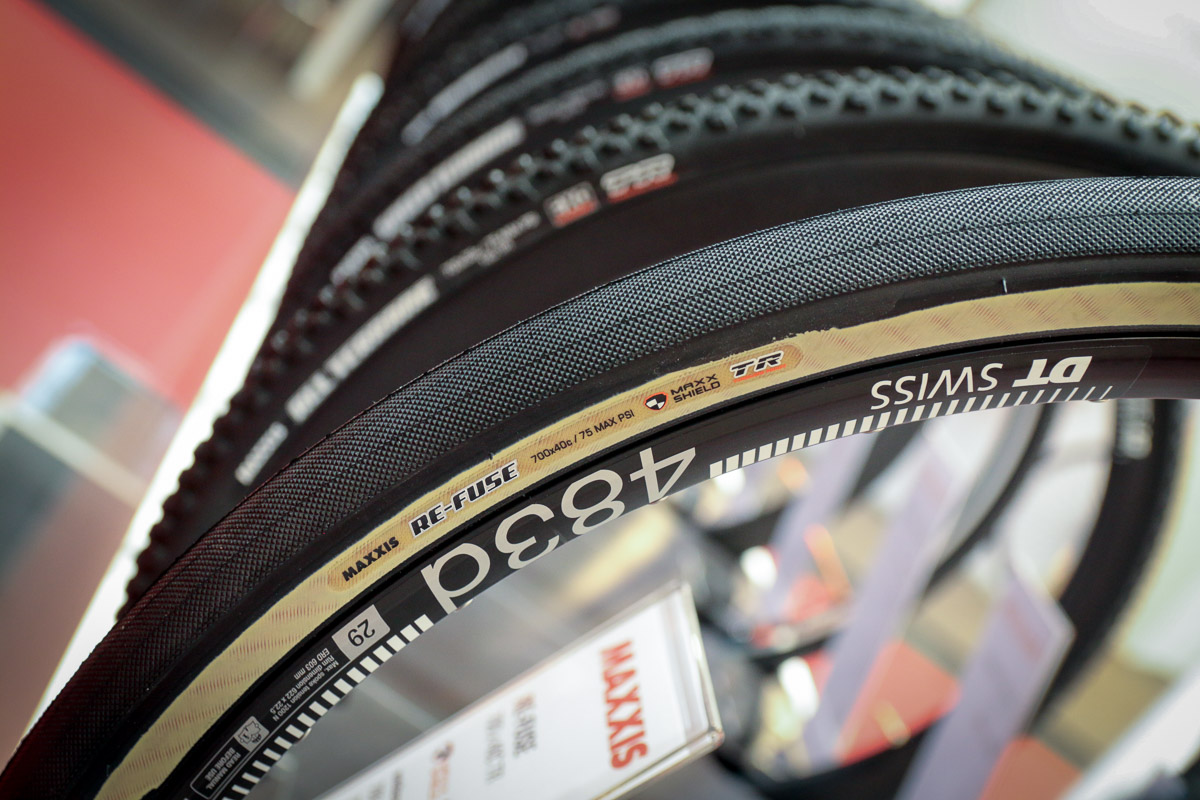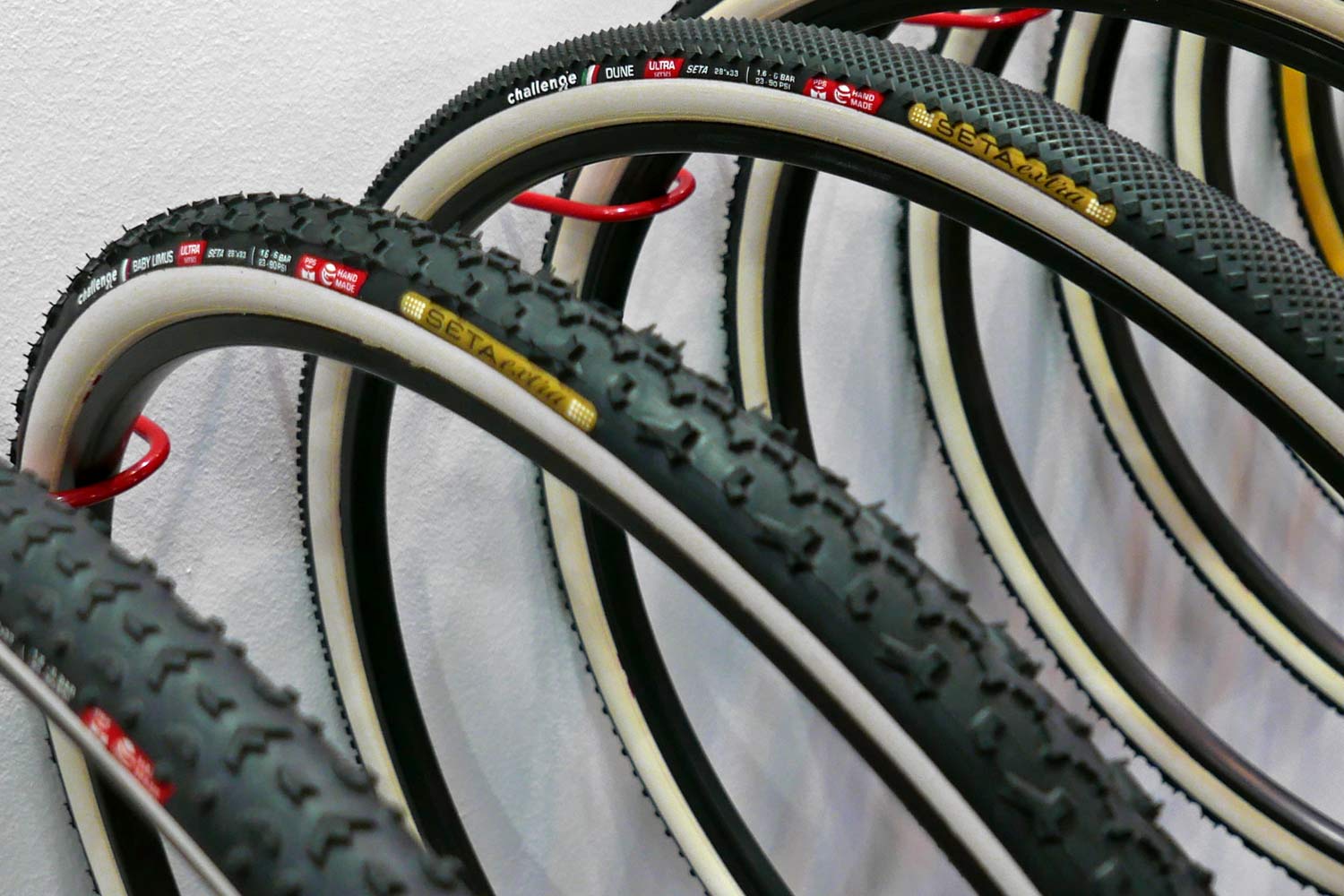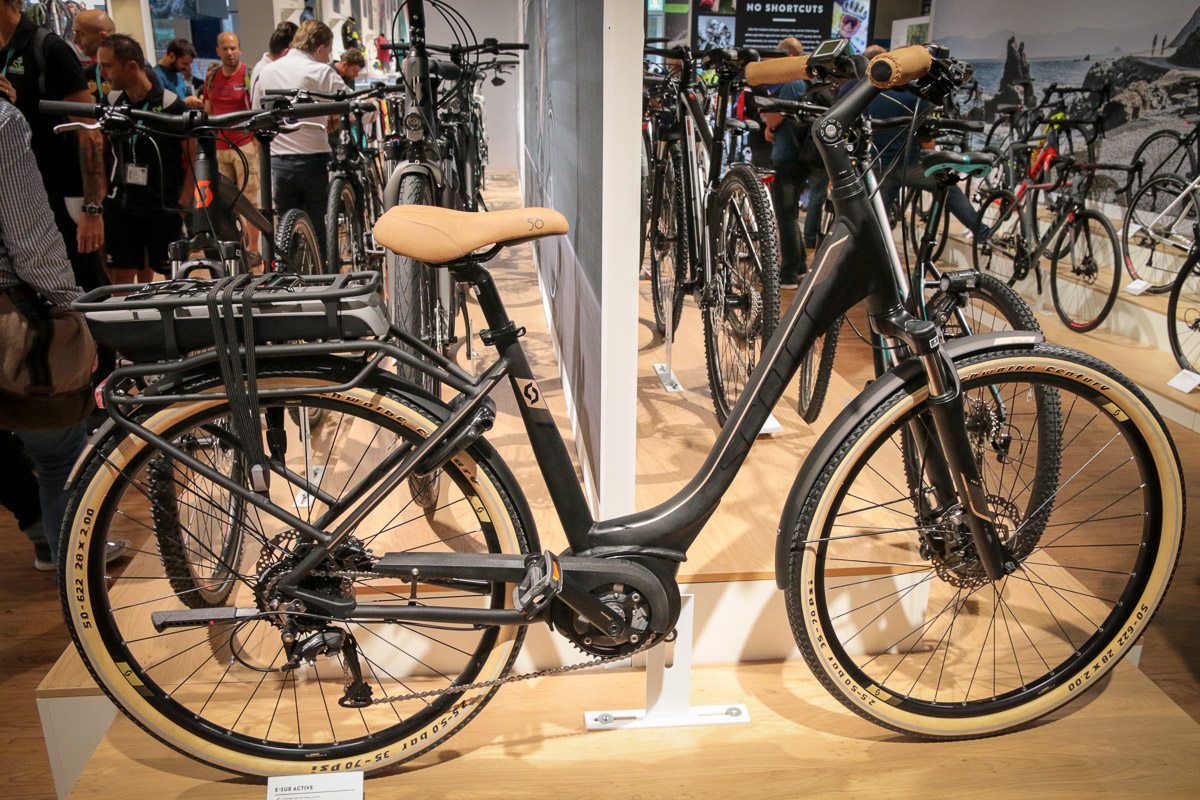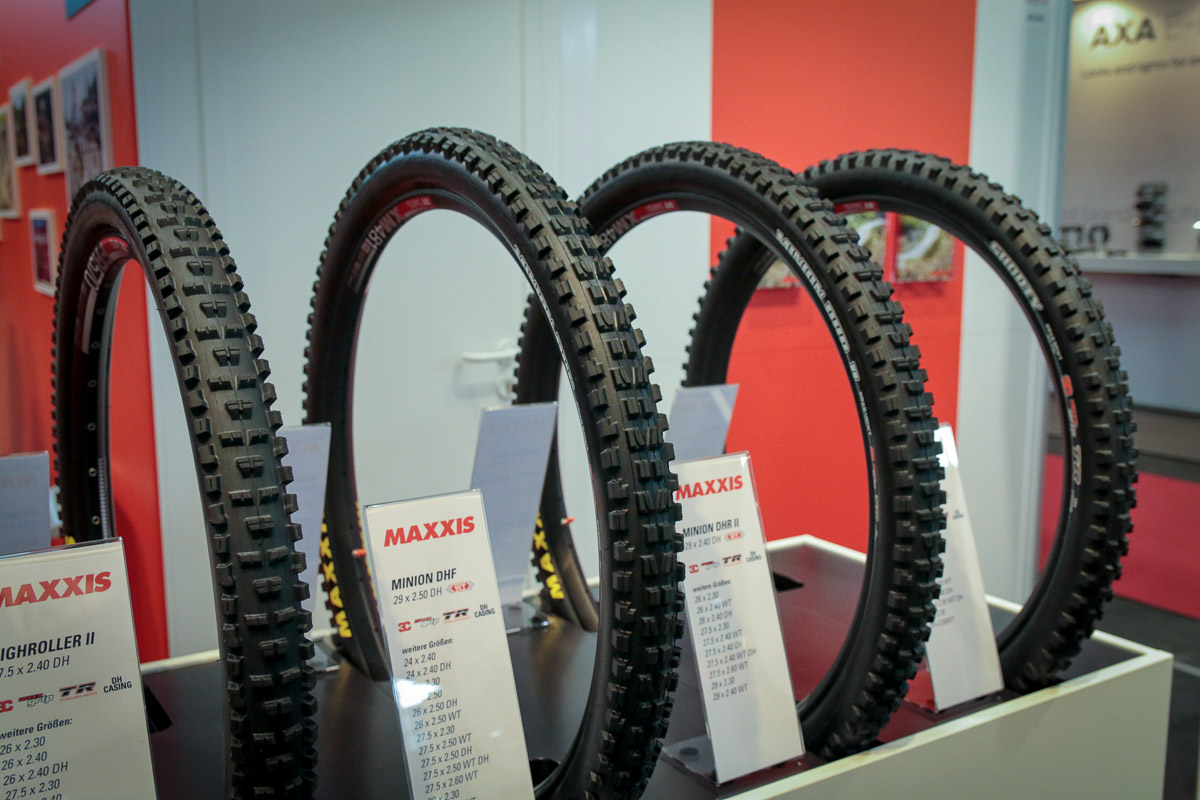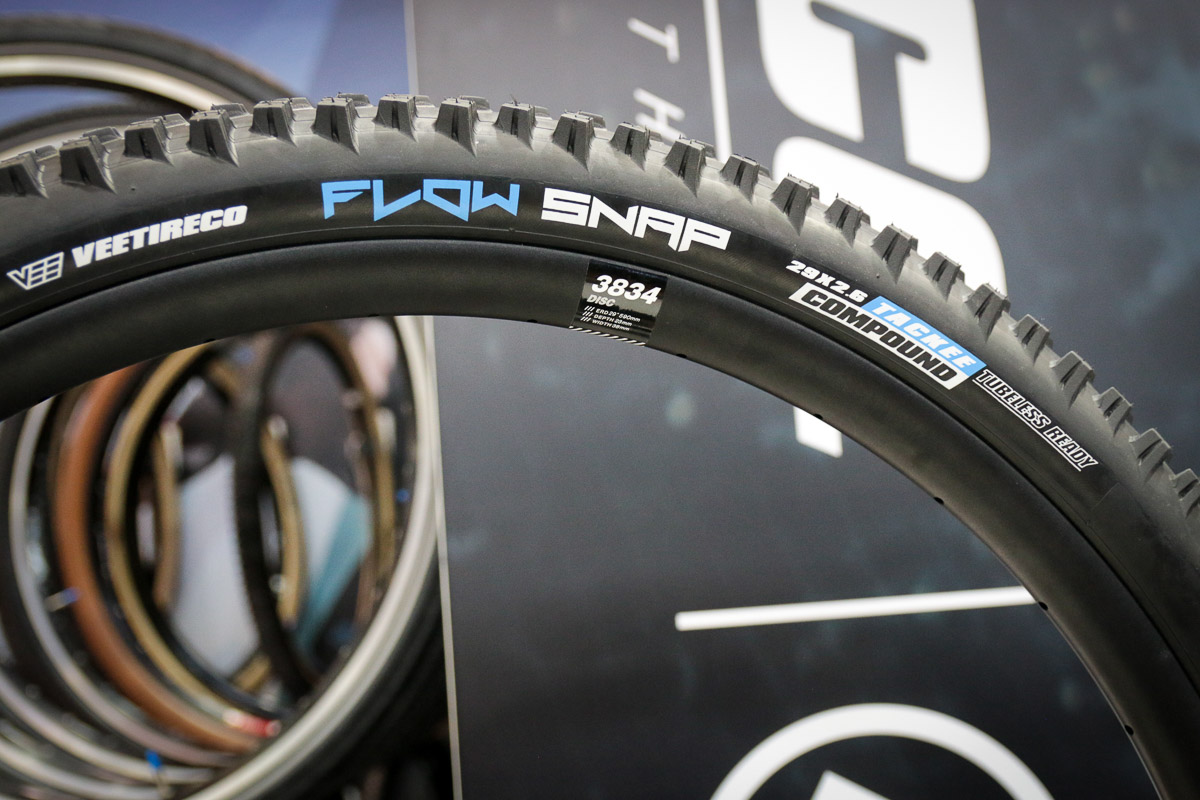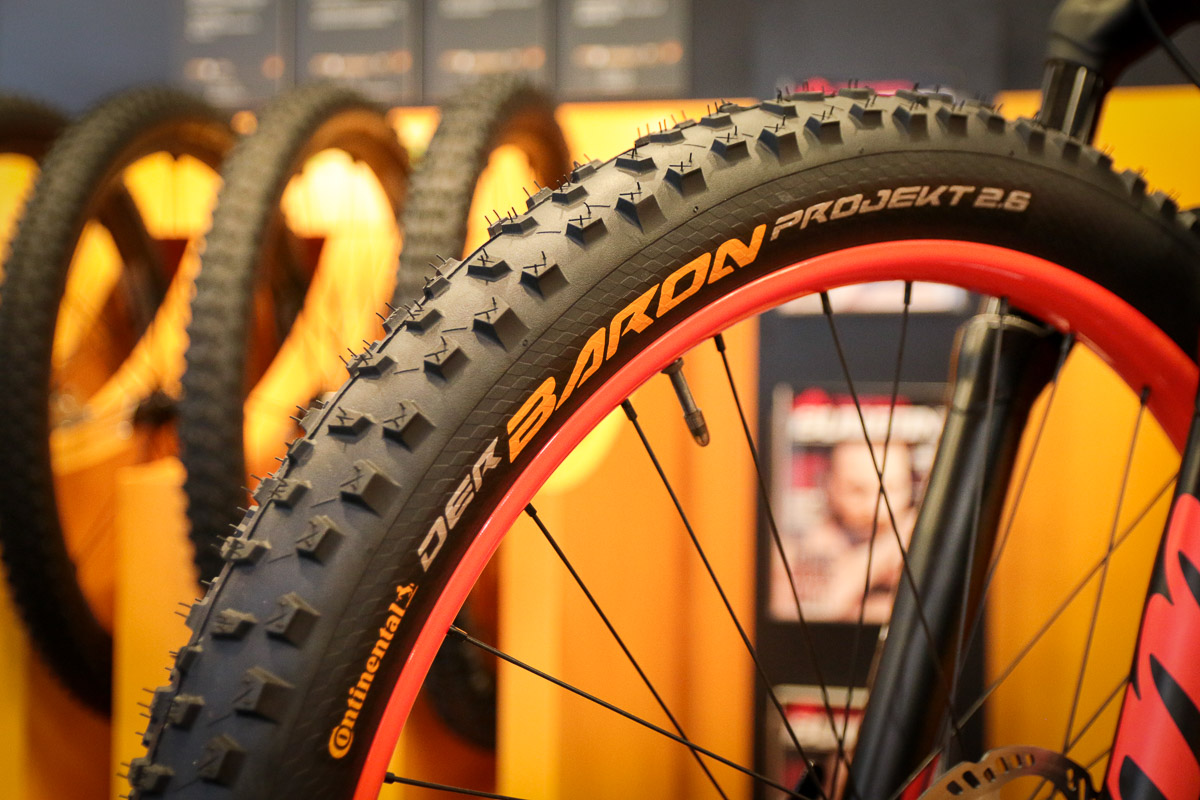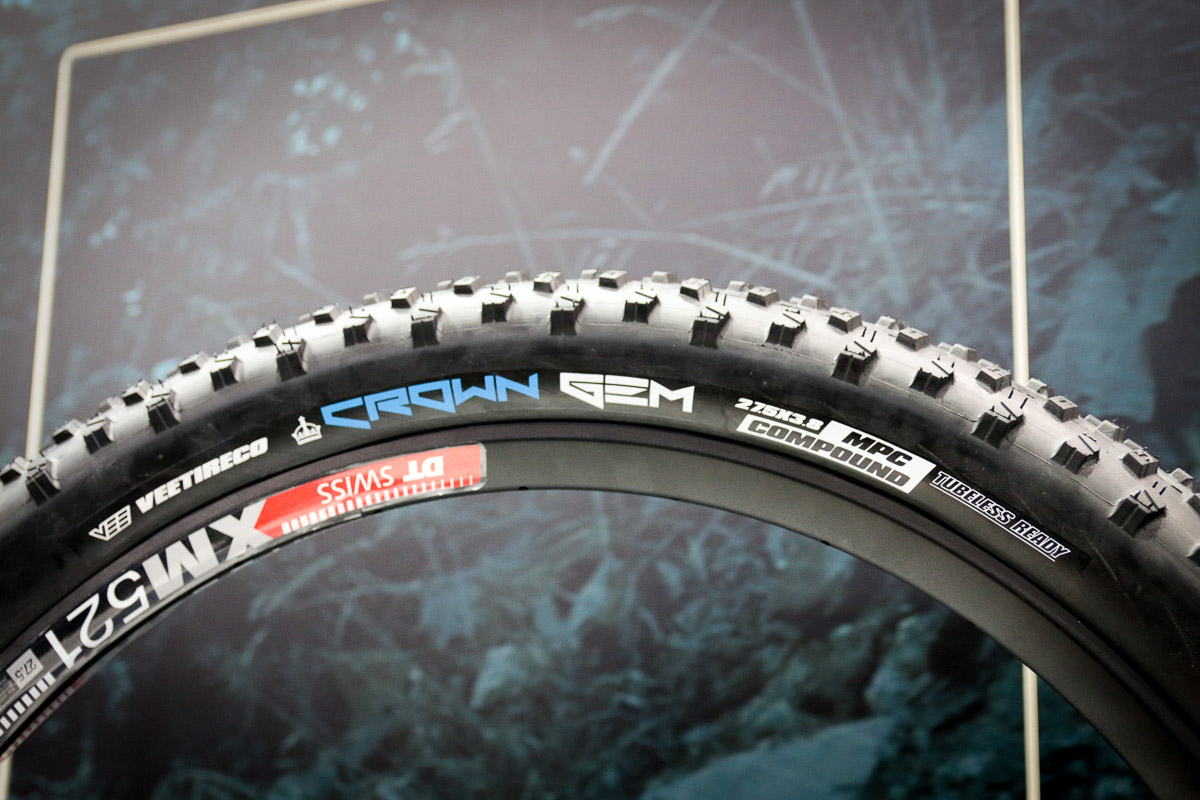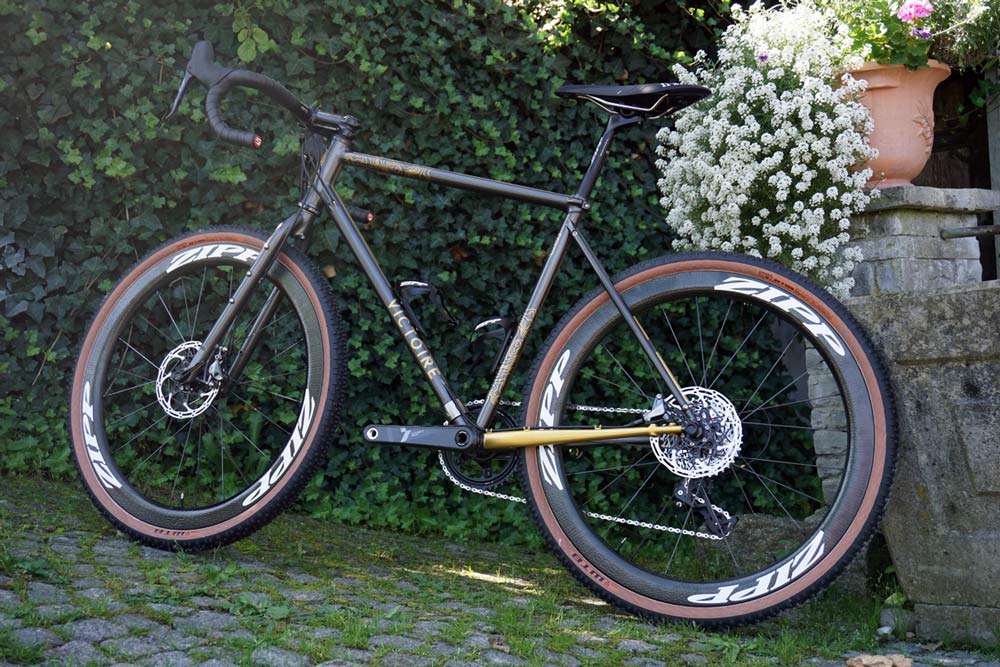Walking around the show, it’s easy to spot obvious trends. But we talked to product managers, brand ambassadors, and the marketing folks at hundreds of companies over the four days of Eurobike to get the real scoop on what’s coming across the board to new tires this coming season…
TAN / NATURAL / BROWN WALL TIRES
Everyone is going with retro looking designs and you need natural rubber sidewalls to cement that classy look. You can go the simple way, like this Stevens 29er aluminum hardtail did, and just toss on a set of tan wall Schwalbes, or…
Get a set of Road Plus brown or tan walls from WTB or Maxxis for your gravel bike…
Or go all the way with a set of white wall silk or cotton Challenge cyclocross tubulars to get down below 25 psi.
The trend ran through almost every category, including this city eBike from Scott.
ROAD TUBELESS
For a mountain biker it is hard to understand that Road Tubeless hasn’t caught on yet. But the tire selection has been limited, and rim consistency is even more critical considering the higher pressures used on the road. Sealant struggles to be a permanent fix above 4-5bar / 58-73psi, but it’s hard to argue with the lower rolling resistance and being able to ride home on what would have otherwise been a flat tire. Fortunately, things are swinging in the right direction. Joe’s No Flats showed off a Road Tubeless specific sealant formula designed to seal at those higher pressures. And a bigger selection of tubeless ready road tires is making the jump an easier choice, as are cyclocross tires. Long time hold out Continental might even finally be offering tubeless ‘cross options by late next year (more on that in a separate post), and Tufo is making the switch, too.
It’s not just tire manufacturers that are helping this happen, either. Now that Mavic has drawn a line in the sand with their Road UST standard, other wheel brands are coming inline with tighter tolerances and some general agreements on where bead seat diameters should be. They may not all adhere to that UST measurement, but they’re at least getting closer. And when that happens, tire manufacturers can fine tune their bead diameters to match, creating a safer system that’s easier to set up for everyone.
29er & TUBELESS DH TIRES, 2.6″ EVERYTHING
It may seem crazy to think about, but there are still DH tires that aren’t tubeless ready. Many downhillers run tubes, so for Maxxis many of their DH tires were still running steel beads with non-sealant rated sidewalls. Moving forward, their Minion DHF, DHR, and Shorty will be available in full tubeless ready DH rated casings with a folding bead and sealant rated sidewalls. These three will also be offered in a new 29 x 2.5″ wide trail version as part of the coming wave of 29″ DH bikes.
Vee Tire Co. has just about every tire size you could imagine so their newest 29 x 2.6″ Flow Snap isn’t that surprising, but when Continental introduces a “plus” tire? You know it’s part of a bigger movement. As part of an all new mountain bike range for 2018, Continental has added the Der Baron 2.6 Projekt in 27.5″ only.
27.5″ FAT
Initially limited to mostly Trek fat bikes, we’re starting to see a lot more fat bikes running the 27.5 x 3.8″ standard, which means more tires as well. The Vee Crown Gem is the latest tire to come in the new size, but we’ve heard rumors about a few other manufacturers that have something in the works. Tires in this size are already offered by Bontrager and Maxxis to name a few, and Terrene says they’re working on something.
650B FOR THE ROAD
WTB has been at the forefront of 650B for gravel and “road plus” with an ever growing assortment of 40mm+ wide tires. But when a brand the size of Zipp gets into a category, you know it’s for real. Look for road bikes with 650B wheels to start hitting stores. Not 650C, mind you, but 650B. What’s the difference? A 571mm (650C) bead seat diameter versus 584mm (650B). Word from Michael Hall, Advanced Development Director for Zipp, is that Canyon has committed to spec’ing their wheels, and Bombtrack is supposedly launching new bikes with that size very soon, too. More are expected.
Why? A couple reasons. When you get into the smaller sizes, the geometry gets a little funny with front-center and chainstays, so offering road bikes with the smaller wheels makes more sense than trying to modify a 700c bike’s geometry to work for shorter riders. That, and tires. Even though there’s an ecosystem for 650C, Hall says tire selection has dried up, and the unit volume of their 404 650C is very small. But thanks to the gravel and adventure road bike scene, there seems to be a lot of tire manufacturers getting molds ready for 650B.
CLINCHERS OVER TUBULARS
DT Swiss partnered with Swiss Side to develop wheels that maximize aerodynamics with clinchers, which is easier to do than with tubulars. Why? Because the tire’s sidewalls can be shaped to better match the rim’s wall, especially when pairing certain rim widths with certain tire widths. Tubulars, on the other hand, are always going to end up round, which means some sort of gap between the rim’s edge and the tire. And with tubeless-ready road tires getting better and more prevalent, and with brands like Schwalbe already saying they’re more efficient, we might be seeing more and more pro teams riding clinchers in the coming years.
